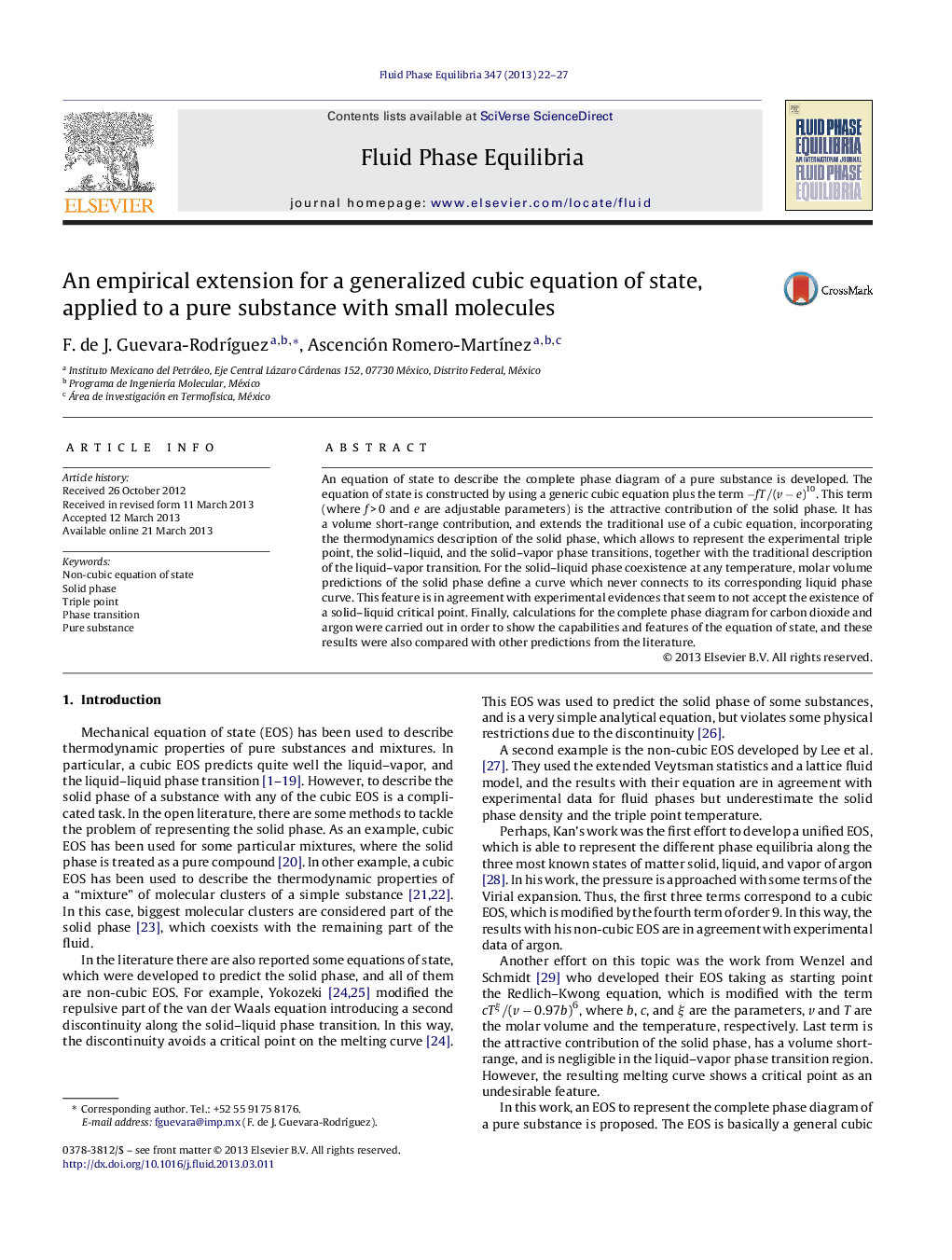| Article ID | Journal | Published Year | Pages | File Type |
|---|---|---|---|---|
| 203636 | Fluid Phase Equilibria | 2013 | 6 Pages |
An equation of state to describe the complete phase diagram of a pure substance is developed. The equation of state is constructed by using a generic cubic equation plus the term −fT/(v−e)10−fT/(v−e)10. This term (where f > 0 and e are adjustable parameters) is the attractive contribution of the solid phase. It has a volume short-range contribution, and extends the traditional use of a cubic equation, incorporating the thermodynamics description of the solid phase, which allows to represent the experimental triple point, the solid–liquid, and the solid–vapor phase transitions, together with the traditional description of the liquid–vapor transition. For the solid–liquid phase coexistence at any temperature, molar volume predictions of the solid phase define a curve which never connects to its corresponding liquid phase curve. This feature is in agreement with experimental evidences that seem to not accept the existence of a solid–liquid critical point. Finally, calculations for the complete phase diagram for carbon dioxide and argon were carried out in order to show the capabilities and features of the equation of state, and these results were also compared with other predictions from the literature.
